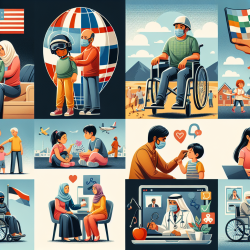Understanding the Impact of Socioeconomic Status and Urbanization on Children's Physical Activity
As a speech-language pathologist deeply committed to improving children's outcomes, understanding the environmental factors that influence children's physical activity is crucial. A recent study titled "Relationships between area-level socioeconomic status and urbanization with active transportation, independent mobility, outdoor time, and physical activity among Canadian children" provides valuable insights that can guide practitioners in developing data-driven interventions.
The Study at a Glance
The study involved 1,699 children in grades 4 to 6 across three Canadian regions, examining the relationship between area-level socioeconomic status (SES) and urbanization with active transportation (AT), independent mobility (IM), outdoor time, and physical activity (PA). The results revealed that area-level SES and urbanization type were generally not associated with AT, IM, or PA. However, children from lower SES areas had reduced odds of spending more than two hours outdoors on weekends compared to those from higher SES areas.
Key Findings and Implications
- Outdoor Time Disparities: Both boys and girls from lower SES areas were less likely to spend over two hours outdoors on weekends. This suggests a need for targeted interventions to increase outdoor play opportunities in these communities.
- Gender and Urbanization: Girls in suburban or rural areas were more likely to spend more time outdoors on weekdays than their urban counterparts, highlighting the potential influence of environment on activity levels.
- Active Transportation: While SES and urbanization did not significantly impact AT, children whose parents owned fewer cars engaged in more AT, suggesting that car ownership might influence children's transportation choices.
Practical Applications for Practitioners
For practitioners, these findings underscore the importance of considering environmental and socioeconomic factors when designing interventions to promote physical activity among children. Here are some actionable steps:
- Advocate for community resources and programs that encourage outdoor play, especially in lower SES areas.
- Collaborate with schools and local organizations to create safe, accessible spaces for children to engage in outdoor activities.
- Educate parents about the benefits of reducing car dependency and encouraging active transportation.
Encouraging Further Research
While this study provides valuable insights, further research is necessary to explore the nuances of these relationships and develop comprehensive strategies for promoting physical activity among children. Practitioners are encouraged to engage with ongoing research and contribute to the development of evidence-based practices.
To read the original research paper, please follow this link: Relationships between area-level socioeconomic status and urbanization with active transportation, independent mobility, outdoor time, and physical activity among Canadian children.










